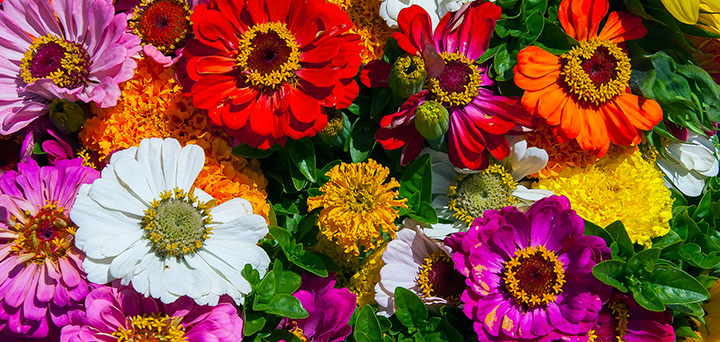Colombian flowers, Valentine’s Day protagonists in 2017

Due to Valentine’s Eve, a big party celebrated on February 14th in the United States, the Colombian floriculture sector has been carrying out the preparations since January to attend the most important season for agribusiness, which promises to be very positive this year.
There is an estimation of more than 500 million stems of flowers to be shipped to the United States, which represents an 18% growth of the areas cultivated with flowers between 2012 and 2016. Last year has been recorded as the one with the greatest production with 225 thousand tons with sales of more than USD1,207 million, establishing itself as one of the most profitable sectors of the country’s agriculture.
Historical review
In the global market of flower exportations, Colombia holds the second place only after Holland. It is still a young sector with more than 40 years of trading experience. Its main crops can be found on the outskirts of Bogota, better known as Bogota’s savannah. There are also other important cultivation areas like Río Negro in Antioquia at the outskirts of Medellin, and Cauca Valley.
There are many factors that allowed Colombia to consolidate itself in the international florist market. It has been wise to explore favorable conditions of geography, such as fertility of the fields, luminosity, humidity, and temperature which maintains stable throughout the year in a country with no seasonality.
Job Generator
Horticulture has a significant impact on the Colombia’s labor sector, strengthening it as the source of more than 80,000 direct jobs and about 50,000 indirect ones. Among these employees, women who contribute and lead their families’ economy as head households outstand.
Just after Colombia, Ecuador is the next big exporting country in the region. Floriculture leads the national economy of non-traditional agricultural exports. In Colombia, there are three types of flowers: carnations, roses and chrysanthemums.
Transport and logistics
Floriculturists who export in Colombia have implemented high quality controls in order to increase worldwide sales levels. Greater quality makes it easy to offer better products that can be preserved in perfect conditions for much longer.
Flowers are first class passengers on air flights with different destinations around the globe. This offers immediacy and accuracy in delivery times, since much of the merchandise is kept in packages that provide necessary temperature levels.
Some other logistics include refrigerated industrial warehouses with temperature control and latest technology systems, and qualified personnel for loading and unloading.
Future of industry
As past problems such as revaluation, competition and logistics have been attenuated, the last Valentine’s Day seasons have been clearly positive. In addition, the climatic conditions have been much more benign for the crops in 2017.
For this year, the industry seeks to create an special credit line (LEC) that includes all the country’s floriculturists in order to meet needs such as the rotation of varieties so that producers have more tools to add extra value to their business to consolidate a leading position in international markets.
Flowers are not only fragile and perishable products, but also strong and differentiating items of Colombia’s economy and it can be used as an example for the region to acknowledge how to take advantage of the distinguishing elements. Furthermore, this is an industry that continues to grow, but the nation is becoming a strong and durable competitor worldwide.
Relevant data
- By December 2016, Colombian Agriculture and Livestock Institute Corporation (ICA) reported 7,714 hectares of flowers and foliage cultivation.
- 69% of production is concentrated in Cundinamarca, 29% in Antioquia and 2% in departments such as Risaralda, Caldas, Quindio, Boyaca, Cauca and Cauca Valley.
- During the “Petal Plan” between January 18th and February 10th, more than 38 thousand vehicles were loaded and mobilized with flowers. The operation then was triplicated from El Dorado Airport in Bogota with Miami as its destination.


